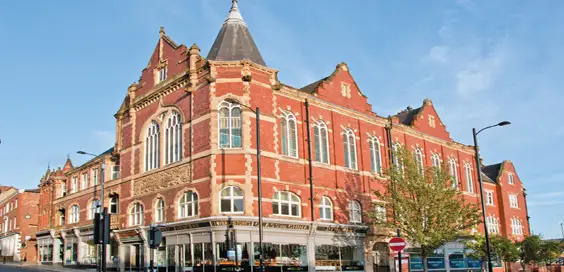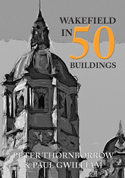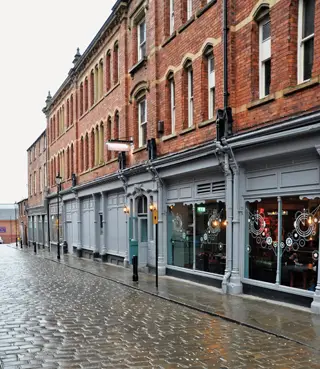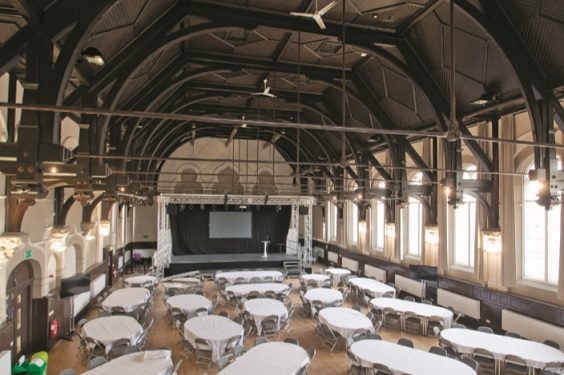Unity Hall, Wakefield – History

By Peter Thornborrow & Paul Gwilliam
This large and impressive three-storey brick building owes it origins to the initiative of the prison officers of Wakefield Prison, who became shareholders in an enterprise to purchase food and goods at wholesale prices, forming the ‘Wakefield Industrial Society Limited Central Stores’ on Bank Street, dated 1878.
Built to the designs of architects W. & D. Thornton in 1876 using a coarse russet-coloured brick, its Venetian Gothic façade has many tall narrow arched windows to its upper floors with linked stone lintels. It retains its original shopfronts (painted grey). Originally above the large shop windows were signs for different departments: ‘Groceries & Provisions’, ‘Carpets’, ‘Drapery Department’, and ‘Central Stores’ on the angle with Westgate, with ‘Offices’ over the central doorway and a carved-head lintel.
The flagstone pavement and road laid with stone sets enhances its Victorian setting. It was massively enlarged between 1899 and 1902 by A. Hart, who added a three-bay range built on Westgate in a smoother brick with keyed-arched stone windows on the first floor. The ground floor retained its shopfronts and engraved facia, which still has ‘Boots & Shoes’ and ‘Butchering’. This forms a link to a taller gable-fronted wing, which was similarly treated but with a large Gothic arched tracery window lighting the upper storeys of Unity Hall.
A carved stone plaque below is decorated with rural industries (a plough and a spinning wheel) and transport (a galleon and a steam-engine) with the symbolic hive of industry is at the centre. The return on Smyth Street has nine tall arched windows lighting the magnificent hammer-beam-roofed assembly hall.
“Art nouveau style”
This was the venue for many memorable events in the past, including a talk by George Bernard Shaw. It temporarily closed in early 2018 before reopening for its first event, an award ceremony on 8 June 2018. Its stone-arched entrance has a carved-head keystone and fine wrought-iron gates in art nouveau style, which incorporated Wakefield’s coat of arms, the fleur-de-lis.
Following the decline of the Co-operative movement the property was bought by Wakefield Corporation in 1971. The former shops are now leased and its halls and meeting rooms are available for public hire.

 Article taken from ‘Wakefield in 50 Buildings’ by Peter Thornborrow & Paul Gwilliam, published by Amberley Publishing, £14.99 paperback, ISBN: 9781445659060
Article taken from ‘Wakefield in 50 Buildings’ by Peter Thornborrow & Paul Gwilliam, published by Amberley Publishing, £14.99 paperback, ISBN: 9781445659060











